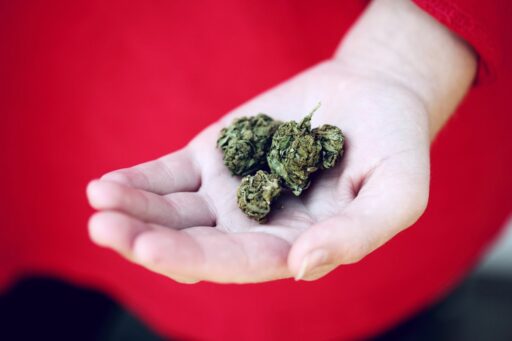Maryland’s journey with medical marijuana has been both pioneering and challenging. This article delves into the state’s medical marijuana policies, examining their effectiveness and the various hurdles they have faced. From legislative changes to economic impacts, and from workplace discrimination to research advancements, we explore the multifaceted nature of Maryland’s medical marijuana landscape.
Key Takeaways
- Maryland’s medical marijuana legislation has sparked significant debate, particularly regarding workplace discrimination and patient rights.
- Comparative analysis with other states reveals Maryland’s unique approach to medical cannabis accessibility and economic outcomes.
- Recent changes in policy have expanded the amount of cannabis that can be purchased and possessed, and recreational retailers may now serve medical patients.
- Advocacy and research, including the use of opioid settlement funds for addiction studies, play a crucial role in shaping Maryland’s medical marijuana policies.
- County-level resistance and the evolving role of dispensaries highlight the ongoing challenges and advancements in patient care within the state.
Assessing the Impact of Maryland’s Medical Marijuana Legislation

Comparative Analysis with Other States
When evaluating Maryland’s medical marijuana policies, it’s crucial to consider how they stack up against other states. Maryland’s approach reflects a broader trend of increasing accessibility and acceptance of medical cannabis across the nation.
Comparing the medical marijuana landscape across states reveals a patchwork of regulations and accessibility. States like Massachusetts and Illinois have seen significant economic growth tied to their marijuana markets, with Massachusetts reaching $1.8 billion in sales in 2023. In contrast, states without legal marijuana, such as Texas and Virginia, show heightened interest in alternatives like Delta-8 THC.
The success of Maryland’s medical marijuana policies can be partly attributed to the state’s ability to adapt and respond to emerging trends and patient needs.
Maryland’s medical marijuana program also faces unique challenges and opportunities, which can be highlighted through a comparison with states that have recently updated their policies or achieved record-breaking sales, such as Missouri’s $1.4 billion market during its first full year of adult-use sales.
Changes in Medical Cannabis Accessibility
The landscape of medical cannabis in Maryland has seen significant changes, with policies evolving to improve patient access. The state has recently increased the legal purchase and possession limit to 2.5 ounces, reflecting a more accommodating stance towards medical cannabis users.
While the expansion of consumption lounges and the authorization for recreational retailers to serve medical patients are notable strides, challenges persist. Patients often encounter physicians who are hesitant to embrace cannabis as a treatment option, despite its growing acceptance in the medical community.
- Familiarize yourself with state standards for qualified conditions.
- Utilize resources like Elevate Holistics’ MMJ FAQs for state-specific information.
- Stay informed on policy changes through reliable sources such as the Marijuana News website.
The integration of medical and recreational facilities is a step forward, yet it underscores the need for continuous education and advocacy to ensure that all patients can benefit from Maryland’s medical marijuana program.
Economic and Social Outcomes
The introduction of medical marijuana policies in Maryland has had a significant impact on the state’s economy and social fabric. The legalization has created a burgeoning industry, with dispensaries contributing to job creation and tax revenue.
Economic benefits include:
- Increased employment opportunities in the cannabis sector
- Growth in ancillary businesses such as security, legal, and consulting services
- Tax revenues that can be allocated to public health and education
Social outcomes are equally noteworthy, with a shift in public perception towards cannabis use for medical purposes. The availability of medical marijuana has also led to a decrease in opioid prescriptions, suggesting a positive public health impact.
The balance between regulation and access is crucial to maximize the benefits while minimizing potential risks associated with medical marijuana use.
Legal Hurdles and Advancements in Maryland’s Marijuana Policies

Workplace Discrimination Concerns
In Maryland, the integration of medical marijuana policies into the workplace has raised significant concerns regarding discrimination. Employees who are legally prescribed medical cannabis face potential workplace biases, despite state protections. This tension highlights the need for clear guidelines that reconcile employee rights with employer policies.
- Employers must navigate the complex interplay between federal illegality and state-level medical marijuana acceptance.
- Employees require assurance that their medical use of cannabis will not unjustly affect their employment status.
- There is a growing call for legislative action to strengthen anti-discrimination measures for medical marijuana patients.
The challenge lies in establishing a legal framework that supports both the safety and productivity of the workplace while safeguarding patient rights.
Maryland lawmakers are actively debating bills aimed at protecting marijuana consumers from workplace discrimination. These discussions are pivotal in shaping a fair and equitable work environment for all.
Psychedelics and Drug Decriminalization Task Force
The establishment of a task force to study the legalization of psychedelics and broad drug decriminalization marks a significant shift in Maryland’s approach to drug policy. Maryland House committees have taken up a pair of bills to create these task forces, reflecting a growing interest in the potential therapeutic benefits of substances like psilocybin.
The task force’s exploration into psychedelics is not an isolated event. Similar efforts are underway in other states, indicating a nationwide reevaluation of drug laws.
While the primary focus is on the medical and therapeutic potential of these substances, the task force also represents a broader movement towards drug policy reform. This includes examining the social, legal, and economic impacts of decriminalization.
Federal Employment and Security Clearances
The intersection of state-legalized medical marijuana and federal employment guidelines presents a complex challenge. Federal agencies have historically denied security clearances to individuals using marijuana, even if such use is sanctioned by state law. This has created a dichotomy where state-compliant medical marijuana patients face barriers in obtaining or retaining federal employment.
Recent legislative efforts aim to reconcile these differences. For instance, the House Bill to remove marijuana as a barrier to federal employment or security clearances, although containing moot provisions, signals a shift in perspective. The Congressional Budget Office has commented on the bill, indicating a growing recognition of the issue at the federal level.
- Federal agencies’ stance on marijuana use
- State vs. federal law conflicts
- Legislative efforts to align policies
The evolving legal landscape requires continuous monitoring to ensure that federal employment policies adapt to the changing status of marijuana at the state level.
Medical Marijuana in the Workplace: A Balancing Act

Protecting Patient Rights
In Maryland, the medical marijuana landscape is evolving to better safeguard patient rights. Patients are empowered to take charge of their health, ensuring that their access to medical cannabis is not hindered by unnecessary barriers. This includes the right to seek referrals for medical marijuana without it being considered a breach of the doctor/patient relationship.
The protection of patient rights extends to the refusal of service in certain circumstances. Dispensaries, like Elevate Holistics, may refuse service to ensure a safe environment for all, provided it aligns with legal guidelines and their company policies.
Maryland’s medical marijuana policies also emphasize inclusivity and diversity, recognizing the importance of equitable access across various demographics. Here’s a snapshot of the patient-centric initiatives:
- Ensuring language accessibility for non-English speakers
- Providing fee waivers for qualifying patients
- Offering crisis resources and support
- Facilitating easy renewal processes for medical cards
These measures reflect a commitment to a patient-first approach, where the rights and well-being of medical marijuana patients are at the forefront of policy considerations.
Implications for Employers
The introduction of medical marijuana policies presents a complex challenge for employers, who must navigate the intersection of state law, federal regulations, and workplace safety. Employers are tasked with balancing compliance against the backdrop of evolving legal landscapes.
- Policy Development: Crafting clear policies that address the use of medical marijuana, while ensuring they are in line with state laws.
- Drug Testing: Determining when and how to conduct drug testing, considering the legal protections for medical marijuana patients.
- Accommodation Requests: Handling employee requests for accommodations due to medical marijuana use.
- Education: Providing training to HR and management on the implications of medical marijuana laws.
Employers must remain vigilant and adaptable, ensuring that their policies are both legally compliant and respectful of employees’ rights. This requires a proactive approach to policy review and employee communication.
Recent Legislative Efforts
In response to evolving perspectives on cannabis, Maryland has seen a push for legislative changes that aim to reconcile federal and state laws regarding marijuana use and employment. The House Bill to remove marijuana as a barrier to federal employment or security clearances, although criticized for containing moot provisions, represents a significant step towards this goal.
Recent legislative efforts also reflect a broader trend towards the decriminalization of cannabis at the state level. For instance, the title ‘Recreational Cannabis Use and Possession in Maryland‘ highlights the shift in policy, with the state preparing for the legalization of possession and use of small amounts of cannabis for adults from July 1, 2023.
- House Bill to remove marijuana as a barrier to federal employment
- Legalization of recreational cannabis use and possession
- Protection of athletes from being penalized for marijuana use in compliance with state law
These legislative changes are not only indicative of Maryland’s progressive stance but also of the growing national sentiment towards the normalization of cannabis.
The Evolving Landscape of Medical Marijuana Dispensaries

County-Level Obstacles
Despite the statewide legalization of medical marijuana, county-level resistance remains a significant barrier to the uniform expansion of dispensary services across Maryland. Local governments have exercised their authority to restrict or outright ban dispensaries within their jurisdictions, leading to a patchwork of availability.
- Some counties have imposed stringent zoning regulations that limit where dispensaries can be located.
- Others have leveraged local ordinances to place moratoriums on new dispensary openings.
- Community opposition, often fueled by misconceptions about medical marijuana, has also played a role in hindering dispensary establishment.
The uneven landscape of dispensary access across the state not only complicates the regulatory environment but also impacts patient care, as some residents must travel considerable distances to fill their prescriptions.
The table below illustrates the disparity in dispensary distribution across select Maryland counties:
| County | Dispensaries Allowed | Zoning Restrictions | Moratorium Status |
|---|---|---|---|
| County A | Yes | High | No |
| County B | No | N/A | Yes |
| County C | Yes | Moderate | No |
This uneven approach to medical marijuana policy at the county level underscores the need for a more harmonized regulatory framework that can ensure equitable access for all qualifying patients.
Expansion of Dispensary Services
The landscape of medical marijuana dispensaries in Maryland is undergoing significant changes, reflecting a broader trend in the state’s approach to cannabis policy. With the introduction of consumption lounges and the recent policy allowing individuals to purchase and possess up to 2.5 ounces of cannabis, dispensaries are poised to play an even more central role in patient care.
As the state nears its 100th dispensary, the industry is not only expanding in numbers but also in the range of services offered. This includes the integration of recreational retailers serving medical cannabis patients, which eliminates the need for separate licensing and streamlines access for consumers.
The expansion of dispensary services is a testament to Maryland’s commitment to improving patient access and accommodating the growing demand for medical cannabis.
The table below outlines the key developments in Maryland’s dispensary services:
| Development | Description |
|---|---|
| Consumption Lounges | Introduction of spaces for legal cannabis consumption |
| Increased Possession Limit | Policy change to allow possession of up to 2.5 ounces |
| Retailer Integration | Recreational retailers can now serve medical patients |
These advancements are not only enhancing patient experience but are also indicative of a maturing industry that is adapting to the evolving needs of its clientele.
Impact on Patient Care
The expansion of medical marijuana dispensaries in Maryland has had a profound impact on patient care. Accessibility to medical cannabis has improved, with patients reporting shorter travel times and increased availability of diverse product options. This has been particularly beneficial for those with mobility issues or chronic conditions that make travel difficult.
- Enhanced patient education on product use and effects
- More personalized patient consultations
- Streamlined processes for obtaining medical cannabis
The improved dispensary services have not only made medical marijuana more accessible but have also contributed to a higher standard of patient care. The emphasis on patient education and personalized care is indicative of a maturing industry that prioritizes patient well-being.
However, the impact varies across counties, with some patients still facing challenges due to local regulations and zoning laws that limit dispensary locations. The ongoing evolution of dispensary services continues to shape the landscape of medical marijuana in Maryland, with patient care at the forefront of this change.
The Role of Research and Advocacy in Shaping MMJ Policies

Utilizing Opioid Settlement Funds for Addiction Studies
The innovative approach of using opioid settlement funds for addiction research has gained traction in various states. Maryland activists are advocating for the allocation of these funds to study alternative treatments, such as Ibogaine, which has shown promise in combating addiction. This initiative reflects a broader trend of seeking out novel and potentially more effective methods to address the opioid crisis.
The potential benefits of such studies are manifold. They could lead to breakthroughs in addiction therapy, offering hope to those struggling with substance abuse. Moreover, the research could spur economic growth by fostering new industries centered around these treatments.
The strategic investment of settlement funds into addiction research could catalyze a paradigm shift in how we understand and treat substance dependency.
While the proposal has faced setbacks in neighboring states, the determination of Maryland’s activists suggests a persistent effort to redirect resources towards this critical area of public health.
The Influence of Patient and Activist Groups
The landscape of medical marijuana policy is often shaped by the voices of those most affected by it—patients and activist groups. Their advocacy has been pivotal in pushing for more progressive legislation and ensuring that patient needs are at the forefront of policy discussions. These groups have been instrumental in educating the public and legislators about the benefits of medical marijuana, countering stigma, and calling for increased research and access.
- Education: Raising awareness about the therapeutic benefits of cannabis.
- Legislation: Lobbying for laws that improve patient access and protect consumer rights.
- Research: Advocating for more studies on medical marijuana’s efficacy and safety.
- Access: Ensuring that patients have the means to obtain their prescribed treatments.
The collective efforts of these organizations have not only influenced policy but have also played a key role in shaping societal attitudes towards medical marijuana. As a result, we see a gradual shift towards acceptance and a more informed dialogue around its use in medical treatment.
Emerging Trends in Cannabis Research
As the medical marijuana landscape continues to evolve, researchers are uncovering new trends that could shape the future of the industry. A recent title, ‘Navigating Cannabis Industry Predictions for 2024: Insights & Trends,’ suggests that the coming year will bring significant regulatory shifts and market opportunities. This aligns with the surge in search interest for alternatives like Delta-8 THC, particularly in regions where marijuana remains illegal.
The distinction between hemp and marijuana is becoming clearer thanks to federally funded research, which has developed new methods of differentiation to aid crime labs. This advancement is crucial as it impacts both legal proceedings and consumer safety.
The quest for more accurate impairment tests is ongoing, with Justice Department researchers indicating the need for better methodologies, especially in the context of driving under the influence.
The implications of these research trends are vast, ranging from policy-making to the development of new products and therapies. As the body of knowledge grows, so does the potential for medical marijuana to become a more integrated part of healthcare solutions.
Conclusion
Maryland’s journey with medical marijuana policies has been a complex one, marked by both progress and challenges. The state has seen significant legislative debates and policy changes, reflecting a broader national and international trend towards the acceptance and regulation of cannabis. With lawmakers tackling issues from workplace discrimination to the expansion of possession limits, Maryland is actively shaping its medical marijuana landscape. However, the path forward is not without obstacles, as evidenced by the resistance from certain counties and the ongoing need for comprehensive research to inform and refine policies. As the state continues to navigate these waters, the success of its medical marijuana policies will ultimately be measured by their ability to balance patient needs, public safety, and social justice.
Frequently Asked Questions
How has Maryland’s medical marijuana legislation impacted patient access compared to other states?
Maryland’s medical marijuana legislation has aimed to improve patient access, aligning with several other states that have similar programs. However, county-level obstacles and comparison with states that have more liberal policies, like those allowing consumption lounges, indicate that there is variability in accessibility and regulations across the country.
What economic and social outcomes have been observed since the introduction of medical marijuana in Maryland?
The introduction of medical marijuana in Maryland has led to economic growth through the establishment of dispensaries and related businesses, as well as job creation. Socially, there have been debates on workplace discrimination and efforts to use marijuana as a barrier to federal employment have been discussed, indicating ongoing social implications.
Are there any protections for medical marijuana patients against workplace discrimination in Maryland?
Maryland lawmakers have been debating bills to protect marijuana consumers from workplace discrimination. Although there is growing awareness of the need for such protections, the legal framework is still evolving, and patients may face challenges until explicit protections are codified into law.
How are psychedelics and broader drug decriminalization efforts related to Maryland’s marijuana policies?
Maryland has taken steps to explore the broader context of drug policies through the formation of a Psychedelics and Drug Decriminalization Task Force. This indicates a willingness to consider a more progressive stance on drug policies, which could influence future marijuana legislation.
What recent legislative efforts have been made to balance medical marijuana use in the workplace?
Recent legislative efforts in Maryland include the consideration of bills that aim to protect medical marijuana patients from workplace discrimination and to remove marijuana as a barrier to federal employment or security clearances. However, some of these provisions have been deemed moot, and the balance between patient rights and employer concerns remains a complex issue.
What role do research and advocacy play in shaping medical marijuana policies in Maryland?
Research and advocacy are pivotal in shaping medical marijuana policies. In Maryland, there are efforts to use opioid settlement funds for addiction studies, and patient and activist groups are influential in advocating for policy changes. Emerging research trends also contribute to the evolving landscape of cannabis legislation.





